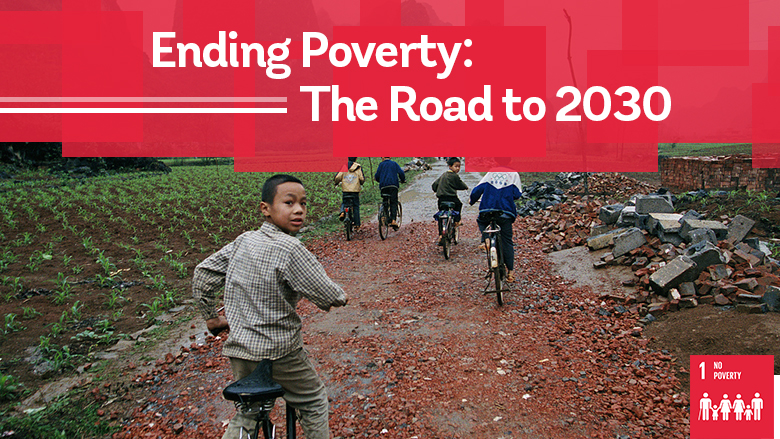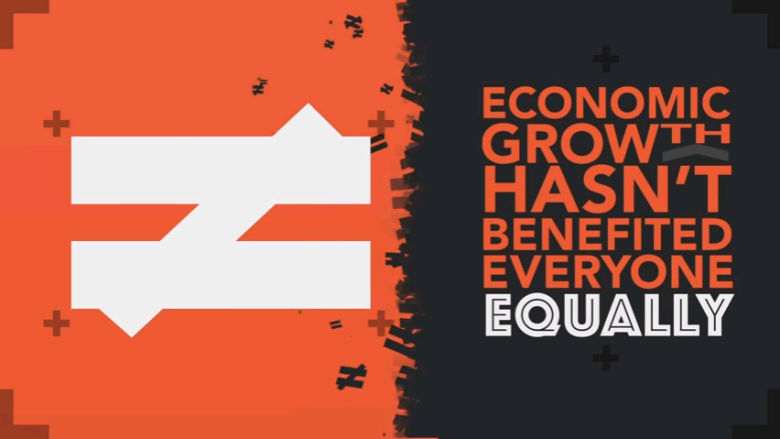Approximately 80 representatives from governments, international organizations, civil society, and private sector from around the world met on May 11-12, 2017 in Copenhagen, Denmark to discuss how to achieve Sustainable Development Goal 1 (SDG 1): Ending Poverty In All Its Forms Everywhere. The meeting was co-hosted by the World Bank Group, UNDP and UN DESA. The following summarizes key facts on global poverty, and the main points discussed during the conference.
Key Facts on Global Poverty
The world has made great strides in eliminating extreme poverty in the last decades. Nearly 1.1 billion people have moved out of extreme poverty since 1990. However, 800 million people in the world still live below $1.90/day, almost 32 percent of the population of developing countries live below $3.10/day- a level of deprivation that is unacceptable. And while the world has seen improvements in a number of areas beyond income, such as maternal mortality, school enrollments, and others, persistent gaps in access to crucial services for the poorest and the marginalized will form a barrier to ending poverty by 2030.
Progress towards ending poverty hinges on addressing growing global challenges such as climate change, fragility and conflict, demographics, macro-economic instability, rapid urbanization, and the social and economic costs of exclusion and inequality. These challenges plague all countries, but have a particularly detrimental impact on those facing compounding vulnerabilities. Despite making up a third of the world’s population, half of today’s extreme poor are children, the vast majority of the extreme poor live in rural areas, around 65 percent work in agriculture, and almost 40 percent have no formal education. Extreme poverty is increasingly concentrated in fragile and conflict situations, in areas prone to natural disasters and in countries where inequalities are high. This underscores the importance of the cross-cutting 2030 Agenda commitment to Leave No One Behind.
The conference underscored the need to take a multidimensional approach to tackling poverty, recognizing that wellbeing is not just defined by the amount of money in a person’s hands, but also about the quality of his or her life.
First main point: Promote Inclusive and Sustainable Growth
It will be impossible to reduce poverty without closing existing economic and opportunity gaps, including by addressing inequalities, discrimination and social exclusion but also by looking at a country’s entire economic and social system to understand how policies impact all segments of the population. Ending poverty requires policy choices that support sustained and inclusive growth: reduce inequalities, boost human capital, improve connectivity to markets, promote decent jobs, promote good governance, and protect the vulnerable from shocks. It also increasingly means addressing growing concerns about the role of, and adaptation to, technology, lack of economic mobility, and perceptions of unfairness. Inclusive economies must embrace governments as well as private sector and non-state actors for effective and efficient delivery of policies that address poverty.
Second main point: Invest in People
Investing in the quality of people’s health, nutrition and education builds a strong foundation for life-long success. When complemented with investments in infrastructure and universal access to basic services such as healthcare, education, water and energy, and paired with strong, inclusive labor markets, all people, regardless of gender, age, location, or economic background – including minorities - have the opportunity to live up to their full potential and provide for themselves and their families throughout their lives. Investment in people must start in childhood and cut across all drivers of change – from agriculture, manufacturing and technology, to health, education, skills building, support for youth and urban-rural connectivity. This holistic approach to investing in people, that promotes policies with a multiplier effect across different populations groups, is critical for all 17 SDGs.
Third main point: Promote Resilience
Recent gains made towards ending poverty are at risk given global trends towards slower economic growth and the threat of negative shocks such as natural disasters, pandemics and recessions. Investments in resilience locally, nationally and globally will be critical to facing the local impacts of global challenges and ensuring that those who have seen progress in the past are not pushed back into poverty. It will be important to focus on those most exposed to climate, health, economic, and conflict/fragility-based vulnerabilities. While inclusive economic growth and investment in human capacity can help build strength at an individual level, social protection and safety nets and strong and stable institutions are critical to mitigating and responding to known and unknown risks across societies. In fragile and conflict situations, it will also be critical to ensure that development and humanitarian efforts complement each other to both respond to immediate crises and work on building more resilient and stable societies.
Cross-Cutting Issue: Better Use of Evidence
Robust data and analysis on the many dimensions of poverty must inform policy making and decision making. The power of numbers and evidence is clear, and more effort needs to be made to close data gaps, disaggregate data, build capacity and strengthen data use. What gets measured, gets done; but focus must be equally placed on strengthening timely access to quality and publically available data in accessible formats as well as using existing data and analysis in a dynamic policy setting framework that also encourages learning from experiences and sharing knowledge.
Cross-Cutting Issue: Multi-pronged Financing Strategies
A holistic response to poverty eradication is built on a financing strategy that includes both public and private sector and promotes inclusive economic strategies. Financing strategies cannot depend solely on one person or political party; they must be embedded in institutions, have strong ownership, leadership and vision, and must be predictable and sustainable while recognizing the challenge of meeting immediate short term needs as well as longer-term objectives. This balance is particularly critical in responding to broader poverty and development objectives in fragile and conflict states.
Cross-Cutting Issue: Stronger, More Inclusive and Diverse Partnerships
Partnerships across state and non-state actors, including the voices of the poor, are critical for success both in making change on the ground and advocating for change in the public sphere. Greater collaboration and coherence across actors are pivotal in the fight to end poverty, and the value added of all stakeholders in implementation of policies should be recognized. For example, creative insurance mechanisms in the field of agriculture can leverage government, private sector, and civil society resources.

